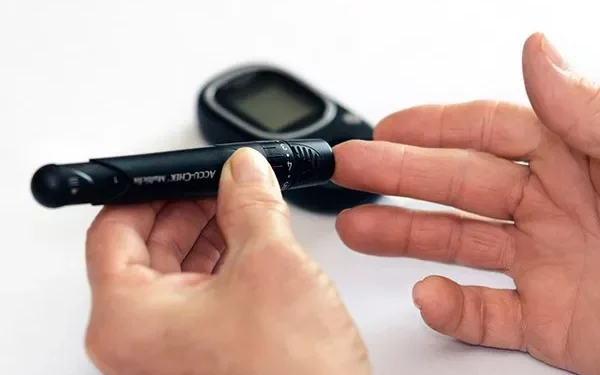Blood sugar, also known as blood glucose, plays a vital role in our body’s ability to produce energy. Glucose is the main type of sugar found in the bloodstream, and it is derived from the food we consume, particularly carbohydrates. Understanding and maintaining normal blood sugar levels is essential for overall health, as it helps regulate bodily functions and prevent chronic conditions such as diabetes. But what exactly is the average blood sugar level in a healthy person, and how can these levels be measured and maintained?
In this article, we will explore what constitutes a normal or average blood sugar level, how blood sugar fluctuates throughout the day, the importance of maintaining healthy glucose levels, and what can be done to prevent abnormal fluctuations.
Understanding Blood Sugar Levels
Before discussing the average blood sugar level, it is essential to understand the basic mechanics of how blood sugar works. After consuming food, particularly carbohydrates, the digestive system breaks it down into glucose. This glucose enters the bloodstream and serves as a source of energy for cells. However, in order for glucose to enter the cells and be used as energy, the hormone insulin, produced by the pancreas, is required. Insulin acts as a key that unlocks cells, allowing them to absorb glucose from the blood.
Blood sugar levels are typically measured in milligrams per deciliter (mg/dL) in the United States or millimoles per liter (mmol/L) in many other parts of the world. The glucose concentration in the blood fluctuates based on factors such as diet, physical activity, and overall health. While individual variations exist, the average blood sugar levels for a healthy person tend to fall within a specific range.
Normal Blood Sugar Levels
In a healthy person, blood sugar levels fluctuate throughout the day depending on various factors such as eating patterns and physical activity. The average person’s blood sugar levels are categorized into different ranges depending on whether the measurement is taken during fasting, after a meal, or randomly during the day.
Fasting Blood Sugar Level
Fasting blood sugar levels are measured after a person has not eaten for at least eight hours, typically taken first thing in the morning. This measurement provides an understanding of how well the body regulates blood sugar in a resting state, without the influence of recent food intake.
Normal fasting blood sugar levels: 70–99 mg/dL (3.9–5.5 mmol/L)
For most healthy individuals, fasting blood sugar levels should be below 100 mg/dL (5.6 mmol/L). Higher levels may indicate insulin resistance or other potential metabolic issues that could lead to prediabetes or type 2 diabetes if left unmanaged.
Postprandial Blood Sugar Level
Postprandial blood sugar levels are measured two hours after a meal. This test helps assess how the body processes and responds to the carbohydrates consumed. After eating, blood sugar naturally rises, but in a healthy individual, insulin ensures that glucose is properly absorbed by the cells, keeping postprandial levels within a healthy range.
Normal postprandial blood sugar levels: Below 140 mg/dL (7.8 mmol/L)
After two hours, a healthy person’s blood sugar level should return to below 140 mg/dL. If levels remain elevated beyond this range, it may suggest that the body is struggling to manage glucose efficiently, indicating prediabetes or diabetes.
Random Blood Sugar Level
Random blood sugar levels can be taken at any time throughout the day, regardless of when the person last ate. This test provides a general idea of the body’s glucose levels and how they fluctuate in response to daily activities.
Normal random blood sugar levels: 70–140 mg/dL (3.9–7.8 mmol/L)
For most healthy individuals, blood sugar levels should not exceed 140 mg/dL at any point in the day, even after eating. Random blood sugar levels above 200 mg/dL (11.1 mmol/L) are considered indicative of diabetes, particularly if accompanied by symptoms such as increased thirst, frequent urination, and fatigue.
Blood Sugar Variability Throughout the Day
It’s important to note that blood sugar levels fluctuate naturally throughout the day based on several factors, including food intake, physical activity, stress, and sleep. A healthy body maintains blood sugar within a normal range by balancing glucose production, insulin secretion, and glucose absorption by the cells.
After consuming a meal, especially one rich in carbohydrates, blood sugar levels rise. In response, the pancreas secretes insulin, allowing glucose to enter the cells and preventing a spike in blood sugar levels. Blood sugar typically peaks about an hour after eating and then gradually declines as glucose is absorbed by the body’s cells. For a healthy person, this process ensures that blood sugar levels remain stable throughout the day.
What is Considered Abnormal Blood Sugar?
While there is a general understanding of what constitutes normal blood sugar levels, any significant deviation from these ranges is cause for concern. Abnormal blood sugar levels can be categorized into two main conditions: hyperglycemia and hypoglycemia.
Hyperglycemia (High Blood Sugar)
Hyperglycemia occurs when blood sugar levels are too high. This can happen when the body doesn’t produce enough insulin, or when the cells become resistant to insulin, as seen in type 2 diabetes. Over time, hyperglycemia can lead to complications such as nerve damage, kidney disease, heart disease, and vision problems.
Symptoms of hyperglycemia: Increased thirst, frequent urination, fatigue, blurred vision, and slow-healing wounds.
Chronic hyperglycemia is commonly seen in people with diabetes and is usually identified by consistently elevated fasting or postprandial blood sugar levels.
Hypoglycemia (Low Blood Sugar)
Hypoglycemia, on the other hand, occurs when blood sugar levels drop too low. This can be a result of skipping meals, excessive physical activity, or taking too much insulin or other diabetes medications. Hypoglycemia is more common in people who are on insulin therapy for diabetes but can also occur in individuals without diabetes under certain conditions.
Symptoms of hypoglycemia: Shakiness, dizziness, confusion, sweating, irritability, and fainting.
Severe hypoglycemia can be life-threatening if left untreated, as the brain relies on glucose for energy. Immediate consumption of fast-acting carbohydrates such as glucose tablets or sugary drinks can help restore normal blood sugar levels in cases of mild hypoglycemia.
Factors Influencing Blood Sugar Levels
There are many factors that influence an individual’s blood sugar levels, some of which can be managed through lifestyle choices, while others may require medical intervention. The most common factors include:
Diet: The types and quantities of food consumed have a direct impact on blood sugar levels. Carbohydrates, in particular, have the greatest influence, as they are broken down into glucose. High-glycemic foods, such as sugary snacks and refined grains, can cause rapid spikes in blood sugar, whereas low-glycemic foods, such as whole grains and non-starchy vegetables, have a slower impact.
Physical Activity: Exercise helps lower blood sugar levels by increasing insulin sensitivity, which allows glucose to be used more efficiently by the muscles for energy. Regular physical activity is a key component of managing healthy blood sugar levels.
Stress: Emotional and physical stress triggers the release of stress hormones such as cortisol, which can raise blood sugar levels by promoting glucose release from the liver. Chronic stress can lead to long-term elevations in blood sugar levels, contributing to the development of insulin resistance.
Sleep: Poor sleep quality or insufficient sleep has been linked to impaired glucose tolerance and higher blood sugar levels. The body’s ability to regulate insulin can be negatively affected by disrupted sleep patterns.
Medications: Certain medications, such as corticosteroids and some antihypertensive drugs, can affect blood sugar levels. It is important for individuals to consult with their healthcare provider if they notice changes in their blood sugar after starting new medications.
Blood Sugar Monitoring: A Crucial Tool for Health
Monitoring blood sugar levels is an essential tool for anyone managing diabetes or wanting to maintain optimal health. Regular blood sugar checks help individuals identify trends and make adjustments to their diet, activity level, and medication as needed. There are several methods for monitoring blood sugar:
Glucose Meters
A glucose meter is a handheld device used to measure blood sugar levels at home. A small drop of blood is obtained by pricking the finger, and the glucose meter provides an instant reading of the blood sugar level.
Continuous Glucose Monitoring (CGM)
Continuous glucose monitoring (CGM) systems involve the use of a small sensor inserted under the skin that measures glucose levels throughout the day. CGMs provide real-time feedback, allowing individuals to track fluctuations in their blood sugar and make necessary adjustments.
CGMs are particularly useful for individuals with diabetes who are on insulin therapy, as they offer more comprehensive data than traditional glucose meters.
HbA1c Test
The HbA1c test is a blood test that measures the average blood sugar level over the past two to three months. It provides a broader picture of blood sugar management and is commonly used to diagnose and monitor diabetes.
For most healthy individuals, an HbA1c level of below 5.7% indicates normal blood sugar control. Levels between 5.7% and 6.4% suggest prediabetes, while an HbA1c of 6.5% or higher is considered indicative of diabetes.
Maintaining Healthy Blood Sugar Levels
Maintaining healthy blood sugar levels requires a combination of lifestyle adjustments, including a balanced diet, regular exercise, and proper stress management. For those at risk of developing diabetes or who have already been diagnosed, the following strategies can help keep blood sugar levels within a healthy range:
Dietary Modifications: Focus on eating a balanced diet rich in whole grains, lean proteins, healthy fats, and non-starchy vegetables. Limit the consumption of refined carbohydrates and sugary snacks.
Physical Activity: Engage in regular physical activity, such as brisk walking, cycling, or strength training, to improve insulin sensitivity and promote glucose utilization by the muscles.
Blood Sugar Monitoring: Regularly check blood sugar levels to monitor for any fluctuations and take action if necessary. For those with diabetes, it is important to work with a healthcare provider to develop a personalized monitoring plan.
Medication Adherence: If prescribed medication for blood sugar management, follow the healthcare provider’s instructions closely and take medications as directed.
See also: What Level Should Glucose Be in a Blood Test?
Conclusion
The average person’s blood sugar level typically falls within a well-defined range depending on the time of day and whether the individual has recently eaten. By maintaining a healthy lifestyle, monitoring blood sugar regularly, and seeking medical advice when necessary, it is possible to manage blood sugar levels effectively and reduce the risk of complications such as diabetes. Understanding and tracking your blood sugar levels is a vital component of long-term health and wellness.
Related topics:
Is Blood Glucose Meter Accurate?

























